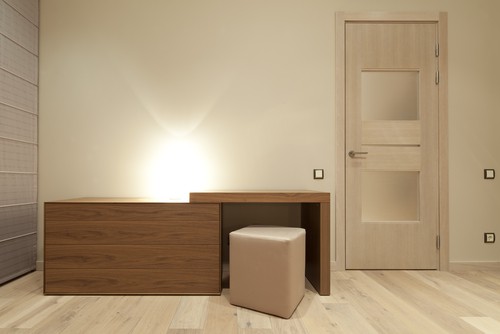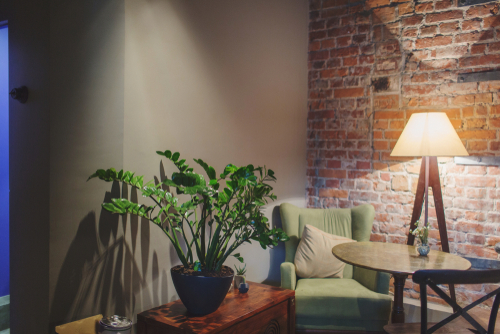
7 Reasons To Avoid Hiring Freelance Painter
May 29, 2019
How Much Does It Cost To Paint A 1000 Sq Ft Condo?
May 29, 2019Painting Your Bedroom In 7 Easy Steps

Bedroom painting is not a complicated process and you do not need to call an expert painter to do the job. With a paint brush, paint and a roller, it is very easy to paint the room till you would be pleased with your work. There are 12 easy steps to painting your bedroom which are:
• STEP 1: Selecting the colour palette:
Your bedroom is your personal perfect sanctuary. The paint job should be able to evoke an emotion depending on the purpose of the bedroom. You will have to explore the various colours that are ideal to view and feel. Consider the bedroom’s size, architectural design, height of the wall and also the light source. An example is using a light colour if your walls are dark. You should be able to use colours that would show a legacy towards what you believe in or the tropical environment of Singapore.
After selecting a colour palette, choose an appropriate colour finish. Any would work but you should be able to choose any of the three finishes which are:
o Flat finishes which are appropriate for painting of older walls, stylish rooms like the master bedroom or a guest room. Flat finishes are smooth and hide flaws thus are good choice for painting old walls.
o Satin finishes which are appropriate for rooms that under frequent use like your child’s bedroom. When using this finish, cleaning the room is very easy since you would only have to wipe off the dirt with a damp cloth.
o Semi-gloss finishes which are appropriate for wainscoting. They have riveting glimmers that produce an exciting contrast against satin finish walls.
• STEP 2: Clearing the room:
Before you start painting, you should clear the room of any décor, furniture or even electrical equipment since paint destroys their surfaces. If there is anything in the room that can’t be moved, then you should cover all its surfaces using a plastic bag to protect it from paint drops.
• STEP 3: Removing old paints:
You should remove old paint using a scraper. This will also remove the paint flakes but when doing this, you should wear goggles to prevent the flakes from entering your eyes. Use a vacuum cleaner to remove the flakes from the floor. After this, Smear a light patching compound to all the cracks and holes using a putty knife lightly past the edges and use the knife to smoothen the surface. Let the compound dry as per the manufacturer’s instructions (2-4 hrs). You can also use sandpaper to make the surface smoother.
After removing the paint flakes, clean the walls thoroughly to remove any grease spots that would damage the smooth finish you intend to obtain. When cleaning, use a mild detergent especially TSP which is an all purpose cleaner that is non-abrasive and also a sponge. The next step is to rinse the walls and let them dry up.
• STEP 4: Taping all wall edges:
Taping all wall edges including window frames, door frames and trims should be done a week before you start painting. Immediately after painting, remember to remove the tapes so that the paint would not peel off. You should also cover the floor with drop cloths since they absorb all the paint compared to plastic bags which don’t thus making the place very slippery.
• STEP 5: Priming the walls:
Priming the walls will ensure you get neatly crafted results for it helps to capture the best glow of the paint. It also makes the final coat look consistent.
• STEP 6: Painting the trim:
It’s preferable to start painting the trim before painting the whole wall. Using a 2” angled tip brush, paint along a uniform direction so that no spots would be missed. After this, paint the doors and window trim. The tapes should be removed before the paint dries up.
After painting cutting in is done where it makes you obtain neat lines at corners and edges. You should use a 2” angled brush and make short strokes away from edges where the walls and ceilings merge.
• STEP 7: Painting the ceilings and walls:
Once all the cutting in is done, use a roller to paint the ceiling before painting the walls. Use a roller fixed to an extended pole so that it would glide the paint in one direction. You should also glide it quickly to maintain its wetness but avoid applying excessive pressure. Use the W painting technique by rolling a 3-foot shape of a “W” then move the roller side by side vertically across the whole wall. This should be done stepwise from wall to wall to prevent wastage. You can also remove excess paint by using a single edged razor blade dipped in a glass cleaner.
Once you are done painting, clean the brushes using lukewarm water with some dish soap. Remove the dried paint from the brush using a metal brush comb, then cover the paint brush with a paper towel so that it would maintain its shape. With these steps, painting your bedroom is a job considered done.




